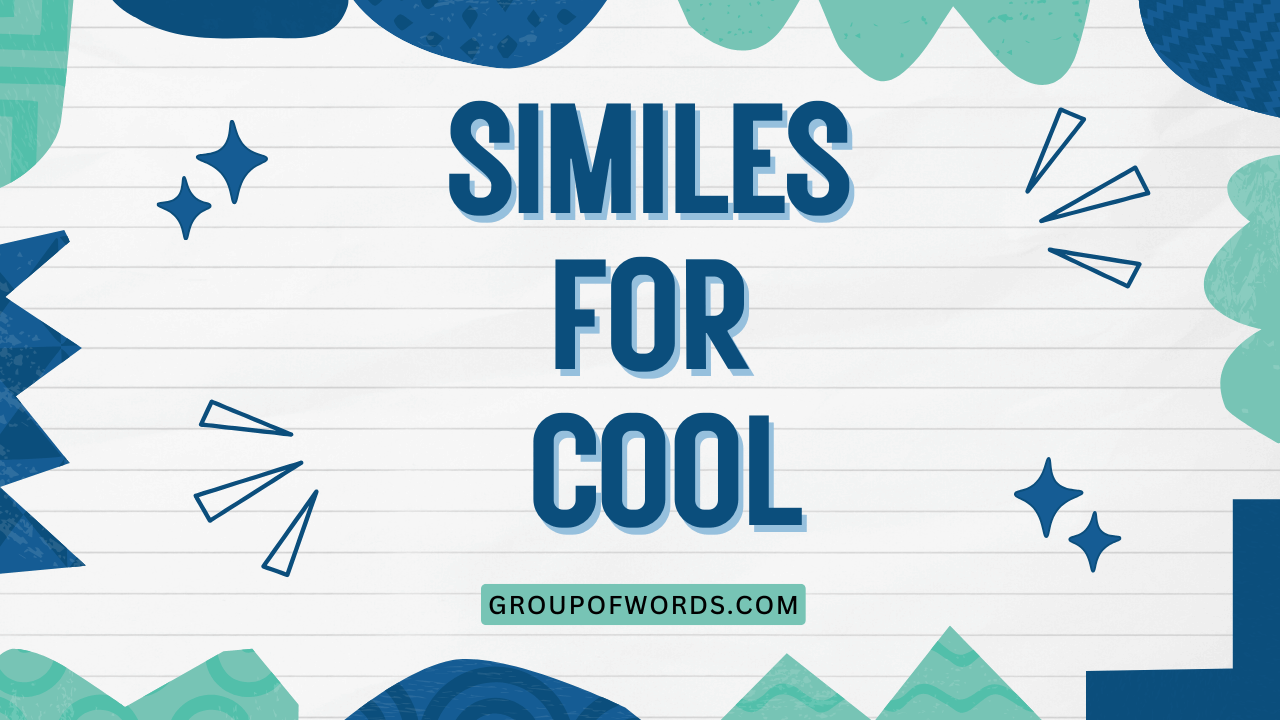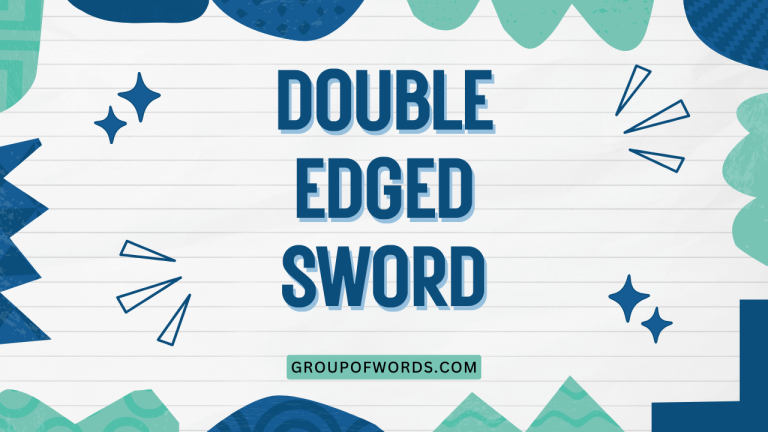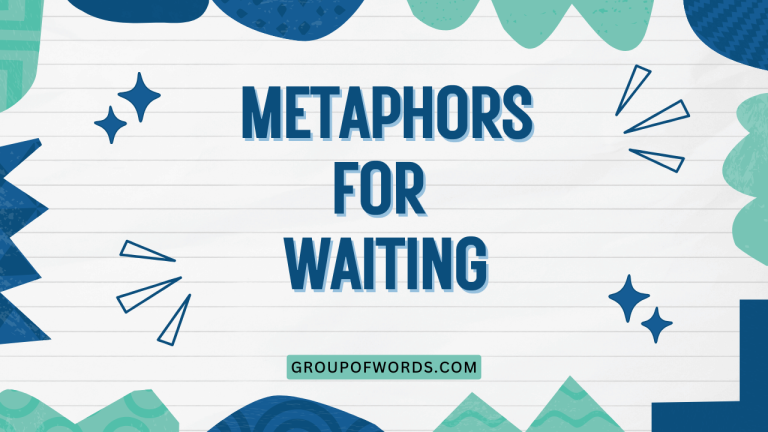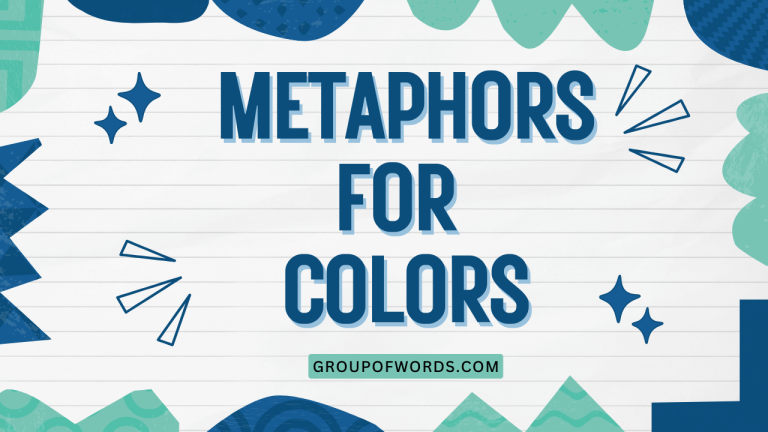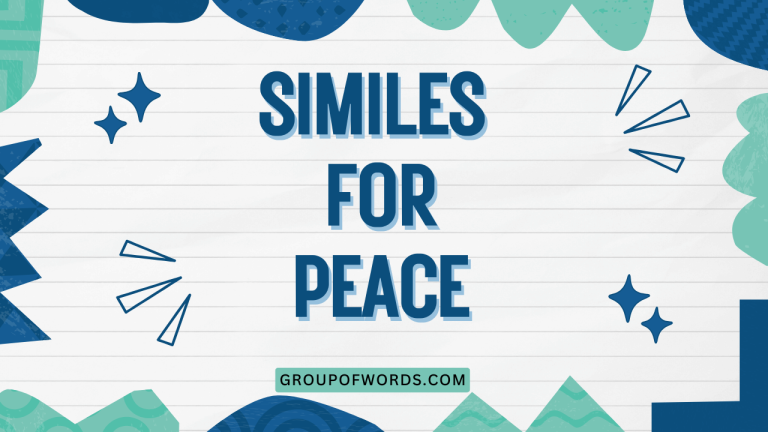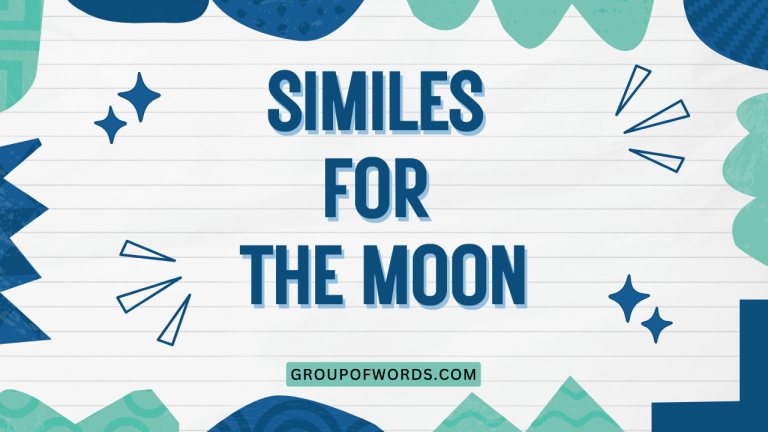Similes for Cool: A Comprehensive Guide to Figurative Language
Similes are powerful tools in the English language, allowing us to create vivid and relatable descriptions by comparing one thing to another. When we want to describe something as “cool,” whether it’s a person’s demeanor, a refreshing breeze, or a trendy gadget, similes offer a more imaginative and engaging alternative to the mundane.
This article delves into the world of similes for “cool,” exploring various categories, providing numerous examples, and equipping you with the knowledge to use them effectively. Whether you’re an English language learner, a writer seeking to enhance your prose, or simply someone interested in the nuances of language, this guide will help you master the art of crafting cool similes.
Table of Contents
- Introduction
- Definition of Simile and Its Function
- Structural Breakdown of Similes
- Types of Similes for “Cool”
- Examples of Similes for “Cool”
- Usage Rules for Similes
- Common Mistakes When Using Similes
- Practice Exercises
- Advanced Topics: Metaphor vs. Simile
- Frequently Asked Questions (FAQ)
- Conclusion
Definition of Simile and Its Function
A simile is a figure of speech that directly compares two different things, typically using the words “like” or “as.” Its primary function is to create a vivid image or enhance understanding by drawing a parallel between the unfamiliar and the familiar. Similes enrich language, making it more descriptive and engaging.
They are commonly used in literature, poetry, advertising, and everyday conversation to add depth and color to our expressions.
The effectiveness of a simile lies in its ability to evoke sensory details and emotional responses. By comparing something to something else, we can transfer qualities and characteristics, creating a more nuanced and impactful description.
For example, saying someone is “as cool as a cucumber” immediately suggests a sense of calmness and composure, far more effectively than simply stating that they are calm.
Similes fall under the broader category of figurative language, which also includes metaphors, personification, and hyperbole. While metaphors directly state that one thing *is* another, similes use comparison words to suggest a resemblance.
This distinction is crucial in understanding the subtle differences in how these figures of speech function.
Structural Breakdown of Similes
The basic structure of a simile is relatively straightforward. It consists of two main components: the **subject** being described and the **object** to which it is being compared, connected by a comparison word, typically “like” or “as.” Understanding this structure is essential for creating effective and grammatically correct similes.
The formula for a simile can be represented as follows:
Subject + Comparison Word (like/as) + Object of Comparison
Let’s break down a few examples:
- Example 1: The breeze was as cool as ice.
- Subject: The breeze
- Comparison Word: as
- Object of Comparison: ice
- Example 2: He remained cool like a seasoned professional.
- Subject: He
- Comparison Word: like
- Object of Comparison: a seasoned professional
The clarity and impact of a simile depend on the appropriateness of the comparison. The object of comparison should possess a quality that is readily associated with the subject, creating a logical and understandable connection.
A well-constructed simile enhances the reader’s understanding and appreciation of the subject being described.
While “like” and “as” are the most common comparison words, other words and phrases can also be used to create similes, such as “similar to,” “resembles,” or “in the same way as.” However, these alternatives are less frequently used and may sound more formal.
Types of Similes for “Cool”
The concept of “cool” can be expressed in various ways, depending on the context. We can categorize similes for “cool” based on the specific aspect of coolness they are intended to convey, such as temperature, personality, style, or skill.
Similes for Temperature Coolness
These similes relate to the literal sense of “cool,” referring to a low temperature. They are often used to describe the weather, drinks, or objects that provide a refreshing sensation.
Similes for Personality Coolness
These similes describe someone’s demeanor, composure, or attitude. They often suggest calmness, confidence, and a lack of emotional reactivity.
Similes for Style Coolness
These similes relate to fashion, trends, and aesthetics. They suggest a sense of sophistication, originality, and effortless elegance.
Similes for Skill Coolness
These similes are used to describe someone’s ability, expertise, or performance. They often imply precision, control, and a natural talent.
Examples of Similes for “Cool”
To further illustrate the different types of similes for “cool,” let’s explore specific examples categorized by temperature, personality, style, and skill.
Temperature-Related Similes: Examples
The following table provides examples of similes used to describe temperature coolness. These similes often evoke images of ice, winter, or refreshing drinks.
| Simile | Explanation |
|---|---|
| As cool as a cucumber | Implies a refreshing and calming coolness. |
| As cool as ice | Indicates a very low temperature. |
| Like a cool breeze on a summer day | Suggests a pleasant and welcome coolness. |
| As cool as the other side of the pillow | A popular simile for a comfortable and refreshing coolness. |
| Cool like a glass of iced tea | Evokes the feeling of a refreshing drink. |
| As cool as a winter’s night | Describes a crisp and invigorating coolness. |
| Like a dip in a cool pool | Suggests a revitalizing and refreshing coolness. |
| As cool as a cave | Implies a constant and shaded coolness. |
| Cool like a mountain stream | Evokes a sense of natural and pristine coolness. |
| As cool as the shade under a tree | Suggests a refreshing escape from the heat. |
| Like a cool compress on a fevered brow | Implies a soothing and relieving coolness. |
| As cool as a crisp autumn morning | Describes a refreshing and invigorating coolness. |
| Cool like a refrigerator | Indicates a very cold temperature. |
| As cool as an air conditioner | Suggests a controlled and artificial coolness. |
| Like a cool mist on your face | Evokes a gentle and refreshing coolness. |
| As cool as the arctic | Describes an extremely cold temperature. |
| Cool like a frozen lake | Indicates a solid and unyielding coolness. |
| As cool as a chilled wine | Suggests a sophisticated and refreshing coolness. |
| Like a cool rain after a hot day | Implies a welcome and relieving coolness. |
| As cool as dew on the grass | Describes a gentle and refreshing coolness. |
| Cool like a sherbet | Evokes a sweet and refreshing coolness. |
| As cool as a fan’s breeze | Suggests a light and circulating coolness. |
| Like a cool splash of water | Implies an abrupt and refreshing coolness. |
These similes effectively convey the sensation of coolness by relating it to familiar experiences and objects.
Personality-Related Similes: Examples
The following table provides examples of similes used to describe someone’s personality as “cool.” These similes often suggest calmness, composure, and a lack of emotional reactivity.
| Simile | Explanation |
|---|---|
| As cool as a cucumber | Implies calmness and composure in stressful situations. |
| Cool like a seasoned professional | Suggests experience and a calm demeanor under pressure. |
| As cool as ice water | Indicates a lack of emotional warmth or reactivity. |
| Like a stone statue, cool and unyielding | Evokes an image of stoicism and emotional detachment. |
| As cool as a cat | Suggests effortless confidence and nonchalance. |
| Cool like a spy on a mission | Implies focus, control, and a lack of visible emotion. |
| As cool as a surgeon during an operation | Describes a calm and focused demeanor under pressure. |
| Cool like a collected gambler | Suggests an ability to remain calm in high-stakes situations. |
| As cool as a monk in meditation | Implies inner peace and emotional detachment. |
| Cool like a cucumber sandwich | A humorous take on the classic “cool as a cucumber.” |
| As cool as the night | Suggests mystery and a calm, unreadable demeanor. |
| Cool like a jazz musician improvising | Implies creativity and composure under pressure. |
| As cool as a robot | Indicates a lack of emotion and mechanical precision. |
| Cool like a secret agent | Suggests stealth, control, and a mysterious demeanor. |
| As cool as a judge in court | Describes impartiality and a calm, authoritative presence. |
| Cool like a seasoned negotiator | Implies experience and a calm, strategic approach. |
| As cool as a bomb disposal expert | Suggests immense courage and unwavering focus. |
| Cool like a lighthouse in a storm | Implies stability, resilience, and unwavering focus. |
| As cool as a zen master | Describes inner peace and emotional detachment. |
| Cool like a poker player with a royal flush | Suggests confidence, control, and a winning attitude. |
| As cool as a veteran pilot | Implies experience, skill, and a calm demeanor under pressure. |
| Cool like a detective solving a case | Suggests intelligence, focus, and a calm, analytical approach. |
These similes effectively convey a sense of calmness, composure, and emotional control, associating the person with objects or figures known for these qualities.
Style-Related Similes: Examples
The following table provides examples of similes used to describe someone’s style as “cool.” These similes often suggest sophistication, originality, and effortless elegance.
| Simile | Explanation |
|---|---|
| As cool as a vintage Cadillac | Implies classic elegance and timeless style. |
| Cool like a rock star on stage | Suggests confidence, charisma, and a bold fashion sense. |
| As cool as a magazine cover | Indicates a polished and trendy appearance. |
| Like a fashion icon, cool and influential | Evokes an image of trendsetting style and elegance. |
| As cool as a bespoke suit | Suggests sophistication, attention to detail, and refined taste. |
| Cool like a work of art | Implies creativity, originality, and aesthetic appeal. |
| As cool as a minimalist design | Describes simplicity, elegance, and understated style. |
| Cool like a secret speakeasy | Suggests exclusivity, mystery, and a unique ambiance. |
| As cool as a black and white photograph | Implies timelessness, simplicity, and classic elegance. |
| Cool like a custom-made motorcycle | Suggests individuality, rebellion, and a unique style. |
| As cool as a vintage movie poster | Implies nostalgia, classic appeal, and timeless charm. |
| Cool like a graffiti artist’s masterpiece | Suggests creativity, boldness, and urban style. |
| As cool as a modern art gallery | Indicates sophistication, innovation, and contemporary style. |
| Cool like a limited-edition sneaker | Suggests exclusivity, trendiness, and a unique style. |
| As cool as a jazz club in the city | Describes sophistication, ambiance, and a classic atmosphere. |
| Cool like a classic leather jacket | Implies timeless style, rebellion, and a rugged appeal. |
| As cool as a designer handbag | Suggests luxury, elegance, and a sophisticated style. |
| Cool like a vintage vinyl record | Implies nostalgia, authenticity, and a unique appeal. |
| As cool as a handcrafted cocktail | Describes sophistication, attention to detail, and refined taste. |
| Cool like a curated playlist | Suggests individuality, taste, and a unique selection. |
| As cool as a rooftop bar at sunset | Implies sophistication, ambiance, and a breathtaking view. |
| Cool like a street style photographer’s subject | Suggests trendiness, individuality, and a unique fashion sense. |
These similes effectively convey a sense of style, sophistication, and originality, associating the person with objects or concepts known for their aesthetic appeal.
Skill-Related Similes: Examples
The following table provides examples of similes used to describe someone’s skill as “cool.” These similes often imply precision, control, and a natural talent.
| Simile | Explanation |
|---|---|
| As cool as a surgeon’s steady hand | Implies precision, expertise, and unwavering control. |
| Cool like a seasoned athlete in the zone | Suggests focus, skill, and peak performance. |
| As cool as a master chef’s knife skills | Indicates expertise, precision, and culinary artistry. |
| Like a virtuoso musician, cool and effortless | Evokes an image of natural talent and effortless skill. |
| As cool as a coder debugging flawlessly | Suggests expertise, precision, and problem-solving ability. |
| Cool like a dancer gliding across the floor | Implies grace, control, and effortless movement. |
| As cool as a pilot landing smoothly | Describes precision, skill, and a calm demeanor under pressure. |
| Cool like a chess grandmaster strategizing | Suggests intelligence, foresight, and strategic thinking. |
| As cool as a magician performing illusions | Implies skill, precision, and captivating performance. |
| Cool like a painter creating a masterpiece | Suggests creativity, skill, and artistic expression. |
| As cool as a sculptor shaping clay | Describes precision, skill, and artistic vision. |
| Cool like a writer crafting a compelling story | Suggests creativity, skill, and narrative ability. |
| As cool as a speaker captivating an audience | Implies charisma, confidence, and communication skills. |
| Cool like a negotiator closing a deal | Suggests skill, strategy, and persuasive ability. |
| As cool as a detective solving a mystery | Describes intelligence, observation, and analytical skills. |
| Cool like a scientist conducting experiments | Suggests precision, methodology, and scientific expertise. |
| As cool as an architect designing a building | Implies creativity, skill, and architectural vision. |
| Cool like an entrepreneur building a business | Suggests vision, strategy, and leadership skills. |
| As cool as a doctor diagnosing a patient | Describes expertise, knowledge, and diagnostic skills. |
| Cool like a teacher inspiring students | Suggests charisma, knowledge, and communication skills. |
| As cool as a driver navigating a race track | Implies skill, precision, and control under pressure. |
These similes effectively convey a sense of skill, expertise, and control, associating the person with professions or activities that require a high level of proficiency.
Usage Rules for Similes
Using similes effectively requires adherence to certain grammatical and stylistic rules. Here are some key considerations:
- Clarity: The comparison should be clear and easily understood. Avoid obscure or overly complex references.
- Relevance: The object of comparison should share a relevant characteristic with the subject being described.
- Originality: While familiar similes can be effective, strive for originality to make your writing more engaging.
- Context: Consider the context and audience when choosing a simile. What might be appropriate in one situation could be inappropriate in another.
- Grammar: Ensure that the simile is grammatically correct, with proper subject-verb agreement and correct use of “like” or “as.”
It’s also important to avoid clichéd similes, which are overused and have lost their impact. While “as cool as a cucumber” is a well-known simile, it may be more effective to create a more original comparison.
Common Mistakes When Using Similes
Even experienced writers can make mistakes when using similes. Here are some common errors to avoid:
| Incorrect | Correct | Explanation |
|---|---|---|
| He is cool as runs. | He is as cool as ice. | The comparison must be logical and understandable. |
| She is like cool. | She is cool like a breeze. | The simile must include an object of comparison. |
| They are cool as a cucumber, but also hot. | They are cool and collected, even in stressful situations. | Avoid contradictory comparisons. |
Another common mistake is using metaphors when a simile is more appropriate, or vice versa. Remember that similes use comparison words (“like” or “as”), while metaphors directly equate two things.
Practice Exercises
Test your understanding of similes with these practice exercises.
- Complete the following similes: He was as cool as __________.
- [ ] a fire
- [ ] ice
- [ ] the sun
- Rewrite the following sentence using a simile: Her demeanor was very calm.
- [ ] Her demeanor was like a storm.
- [ ] Her demeanor was as cool as a cucumber.
- [ ] Her demeanor was hot.
- Which of the following is NOT a simile?
- [ ] As cool as a breeze
- [ ] Cool like ice
- [ ] He is cool
- Complete the following similes: The drink was as cool as __________.
- [ ] a desert
- [ ] ice water
- [ ] lava
- Rewrite the following sentence using a simile: His style was very fashionable.
- [ ] His style was like a rock.
- [ ] His style was as cool as a magazine cover.
- [ ] His style was old.
- Which of the following is NOT a simile?
- [ ] As cool as a cucumber
- [ ] Cool like running water
- [ ] She is stylish
- Complete the following similes: The room was as cool as __________.
- [ ] a furnace
- [ ] a refrigerator
- [ ] an oven
- Rewrite the following sentence using a simile: His performance was very skilled.
- [ ] His performance was like a failure.
- [ ] His performance was as cool as a surgeon’s hand.
- [ ] His performance was clumsy.
- Which of the following is NOT a simile?
- [ ] As cool as ice
- [ ] Cool like a breeze
- [ ] The cake is tasty
- Complete the following similes: The evening was as cool as __________.
- [ ] a volcano
- [ ] a winter’s night
- [ ] a bonfire
Answer Key:
- b
- b
- c
- b
- b
- c
- b
- b
- c
- b
Advanced Topics: Metaphor vs. Simile
While similes and metaphors both draw comparisons, they do so in different ways. A simile uses “like” or “as” to suggest a resemblance, while a metaphor directly equates two things.
Understanding this distinction is crucial for advanced writers.
Consider these examples:
- Simile: He is as cool as a cucumber. (He is *like* a cucumber in his calmness.)
- Metaphor: He is a cucumber. (He *is* calmness personified.)
Metaphors are often considered more powerful and evocative than similes because they create a stronger sense of connection between the two things being compared. However, similes can be more precise and less ambiguous.
Another advanced technique is the use of extended similes or metaphors, where the comparison is developed over several sentences or even paragraphs. This can create a richer and more detailed image in the reader’s mind.
Frequently Asked Questions (FAQ)
- What is the difference between a simile and a metaphor?
A simile uses “like” or “as” to compare two things, while a metaphor directly equates them. Similes suggest a resemblance, while metaphors assert an identity.
- How can I make my similes more original?
Avoid clichéd comparisons and strive to find unexpected and unique connections between the subject and object of comparison. Think outside the box and consider sensory details and emotional responses.
- Are there any situations where similes are not appropriate?
Similes may be inappropriate in formal or technical writing where clarity and precision are paramount. In such contexts, direct and literal language is often preferred.
- Can I use similes in business writing?
Yes, similes can be used in business writing to make your message more engaging and memorable, but use them sparingly and ensure they are appropriate for the audience and context.
- How do I avoid using clichéd similes?
Be aware of common similes and actively seek alternatives. Brainstorm different comparisons and consider what specific qualities you want to emphasize.
- What makes a simile effective?
An effective simile is clear, relevant, original, and appropriate for the context. It should enhance the reader’s understanding and appreciation of the subject being described.
- How can I improve my simile writing skills?
Practice regularly, read widely, and pay attention to how other writers use similes. Experiment with different comparisons and seek feedback from others.
- What role do similes play in poetry?
Similes are frequently used in poetry to create vivid imagery, evoke emotions, and enhance the overall impact of the poem. They add depth and complexity to the language.
Conclusion
Mastering the art of crafting similes for “cool” involves understanding the nuances of language, the power of comparison, and the importance of originality. By exploring different categories, studying examples, and practicing your skills, you can effectively use similes to enhance your writing and communication.
Remember to consider the context, audience, and desired effect when choosing a simile, and strive to create comparisons that are both clear and engaging.
Similes are more than just decorative elements; they are powerful tools that can transform ordinary language into something extraordinary. By incorporating them thoughtfully and creatively, you can add depth, color, and impact to your expressions, making your writing more memorable and effective.
Continue to practice and experiment with similes, and you will find yourself developing a keen sense of how to use them to their full potential. The world of figurative language is vast and rewarding, and mastering similes is a significant step towards becoming a more skilled and expressive communicator.
